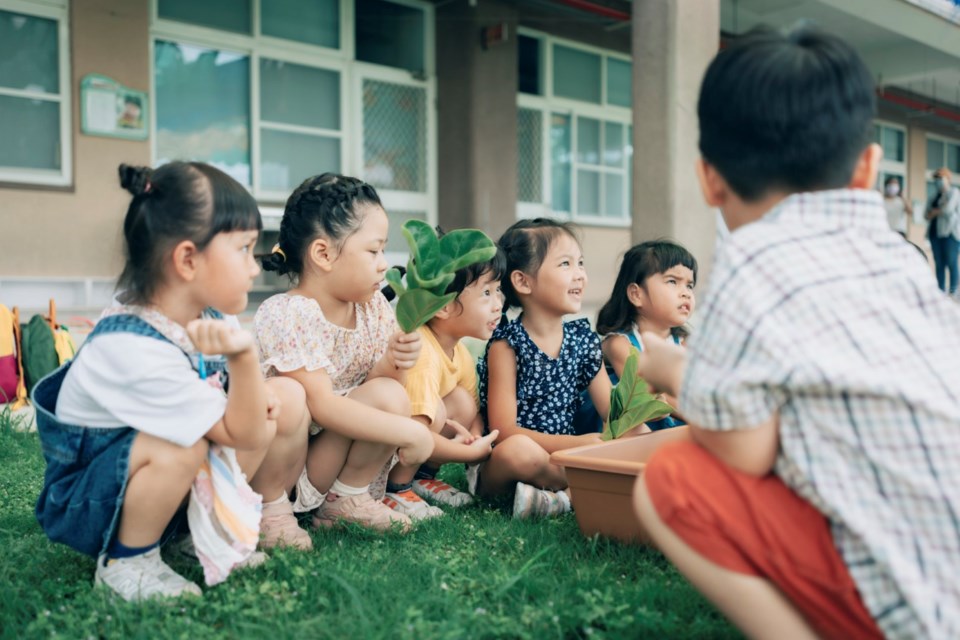PRINCE ALBERT — Two new reports presented at the Prince Albert Catholic School Division board meeting on Monday show learning levels for students in kindergarten and pre-kindergarten programs have remained consistent.
Superintendent Charity Dmytruk presented the Strive for 5 report and the EYE (Early Years Evaluation) report on Monday. Strive for 5 focuses on oral language among young students, while the EYE report focuses on how ready students are for Grade 1. Dmytruk said that the reports showed consistent performance among students, even though the COVID years created some challenges before they enrolled in school.
“They would be on par with what we have seen over the last number of years,” she said. “The last six years since I've been in this position, I would say that it is staying fairly consistent with what we have seen over those years.
“We know that students coming out of what we experienced there with COVID had a little less opportunity for some of those oral language opportunities, like playgroups and dealing with their peers, so we're focused on ensuring that our environment is rich in language and that we are following that play-based curriculum that our ministry has given us.”
Both reports track individual student performance, which allows the division to provide added instruction in areas of need.
“What we strive for is for students to be able to have five oral exchanges—either with a peer or with an adult—of three to five words or phrases in each of those exchanges, and then at the kindergarten level,” Dmytruk said.
Dmytruk added that research shows the areas of cognitive skills and language and communications skills are early indicators for reading outcomes for students up to the ages of 8 and 9.
According to the data, pre-K students saw an increase of 29 per cent in their oral language development between September 2022 and May 2023. For kindergarten students, the increase was 21 per cent during that same period.
As of May 2023, 89 per cent of kindergarten students who used the Strive for 5 programs were showing satisfactory oral language development. Holy Cross school had the highest levels with 100 per cent of students hitting the mark. St. Anne and St. Francis were second highest at 94 per cent, followed by St. Catherine at 93 per cent, St. Michael at 86 per cent, and St. John at 65 per cent.
As of May 2023, 81 per cent of pre-kindergarten students who used the Strive for 5 programs were showing satisfactory oral language development. St. Francis school had the highest levels with 100 per cent of students hitting the mark. St. Anne was second highest at 97 per cent, followed by St. Catherine at 79 per cent, St. Michael at 77 per cent, and St. John at 59 per cent.
In Strive for 5, students are taught to use more than a yes or no response and are taught to communicate through interaction with another person. Teachers focus on five quality engagement conversational elements. The goal is to build language by exposing students to more words, especially with new concepts.
Dmytruk said it was encouraging to see the positive results.
“It is so fun to see how they progress throughout the year because they might come into pre-K and they're only able to make, well, maybe no exchanges or maybe they're making two or three exchanges,” she said.
With last year’s crop of kindergarten students moving on, and a new crop of pre-kindergarten students coming in, oral language development has fallen to 51 per cent as of October 2023. That stat is known as the baseline stat, and it helps them identify which programs work best for students by comparing their end-of-year results to the baseline.
The October report shows baseline oral language development in pre-kindergarten sitting at 51 per cent in Ecole St. Anne, 22 per cent in St. Michael, 88 per cent in St. Francis, 59 in St. Catherine, and 21 per cent in St. John.
EYE (Early Years Evaluation) shows how ready students are for Grade 1. Students are broken up into three tiers after being evaluated. Tier 1 requires quality classroom instruction. Tier 2 requires quality classroom instruction plus targeted small-group instruction and Tier 3 requires quality classroom instruction and individualized instruction.
“We measure individual student progress using the EYE or early years evaluation teacher assessment and that assessment monitors awareness of self and environment, social skills and approaches to learning, cognitive skills, language and communication, physical development such as fine motor and gross motor skills, “ Dmytruk said.
The data set shows that 58 per cent of students are in Tier 1, 22 per cent of students are in Tier 2 and 19 per of students are in Tier 3.
She explained that the consistent numbers even with learning disruptions caused by the COVID-19 pandemic show that the programs are working.
“We are really proud of the exceptional work that our teachers and support staff do to support students in the early years and pre-K and Kindergarten, and we're equally proud of the growth that those students show throughout the year,” Dmytruk said.
The division began using the Strive for 5 program in the 2017-18 school year.
SASKTODAY.ca is Saskatchewan's home page. Bookmark us at this link.




